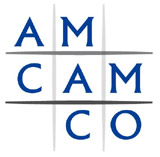|
| |
|
|
|
ű Place To Camp
 |
Destination
1- Siem Reap
2- Kampot
3- Sihanoukville
4- Kirirom |
|
Highlight Destination to camp |
|
1- Bokor Mountain
The road to the summit of Bokor Mountain
is pock-marked and strewn with rocks; vehicles crawl up the winding road lined with faded kilometer markers. Through sun-lit
gaps in the trees, a glimpse of the sea brightens the weary faces of travelers and when they reach the summit, buttons are
pressed and car windows slide down to the smell of wild flowers and the bite of cold air.
Dilapidated buildings with missing doors and windows for eyes—their
fašades patched with rust-colored-lichen—watch the arrivals through empty frames. In the early twenties, these solemn
quiet buildings were once the lively heart of the famed ‘Borei Bokor’ or ‘City of Bokor’. In 1922
King Sisowath agreed to the construction of this settlement. A settlement, with schools, a hospital, a pagoda and a Christian
church, hotels, a post office, a power plant and a water-supplying plant. Bokor became a haven for French holiday-makers.
 |
 |
During the Sangkum Reastr Nyum era (1955-1970), led by Samdech
Preah Norodom Sihanouk, ‘Borei Bokor’ was famed for its windswept beauty and incomparable scenery. In 1961, King
Norodom Sihanouk, ordered the renovation of all public buildings and the construction of additional buildings to beautify
the area to entice more visitors. |
The French having
left, Bokor then became a week-end holiday resort for Cambodian civil servants from Phnom Penh.
Cambodia enjoyed a certain prosperity then, on a par with
other Southeast Asian countries. But the civil war of the following two decades almost destroyed ‘Borei Bokor’
and its beauty was forgotten. But slowly, it is emerging from the rubble. The Cambodian government has honored the settlement,
and the mountain’s, history. It is now a protected national park.
Director of Bokor National Park Chey Yuthearith says about
10,000 people lived in ‘Borei Bokor’ during the Sangkum Reastr Nyum era. They were civil servants, businessmen
and farmers, who grew vegetables, fruit trees and tea. “But now only a group of 50 park rangers live atop Bokor,”
Chey says.
“This area is colder than any other place in the whole
kingdom. At certain times of the year, in the evenings, the temperature drops to as low as 10-16░C and rises to a mere 22░C
during the day.”
 |
 |
“The Bokor summit is 1,079m above sea level. The national
park is 42km from Kampot and it is 32km from the junction of National Road 3, at the foot of the mountain, to the peak.”
According to a 1993 Royal Decree, Bokor National Park covered an area of 140,000ha including the former City, but Chea says
the entire area of the park covers 150,000ha. |
The director complains that as there are too few rangers for
such a vast area it is difficult to patrol illegal loggers and poachers.
For sightseers, Chea says there is a 60m, three-tiered waterfall
in the Park and 20km from the old ‘City of Bokor’, there is a large, flat area of rock with grasses growing between
the cracks in lines, like dikes in a rice field. This place is called Veal Srae Muy Roy or Plain of a Hundred Rice Fields.
 |
 |
“There are also many kinds of wild animals in the forest,
tigers, elephants, oxen, buffalo, deer all roam here and there are more than 230 species of birds.”
Prum Socheat is a staff member at the Khmer Women’s
Voice Center and Sary Nitha works at an organization assisting women in crisis. They are visitors at Bokor |
and they offer
their impressions of the mountain-top.
“I feel as if I were flying or walking in the sky like
in my dreams. When I peer down from where I stand, I see clouds floating along the waist of the mountain far away,”
Prum says.
“Here, you feel the coldness reaching into your heart,” Sary says.
“No waterfall is as cold as Bokor waterfall. I will never forget the scenery of the mountain. It is like a daydream
in the sky.”
2- Kirirom Mountain
more info., please visit kirirom Hillside Resort
3-Sihanoukville
| | |
|
|
|
Learn More About
RV

ParadiseTrailers is a part of The AMCAMCo., LtdGroup
|
|
|
|

|